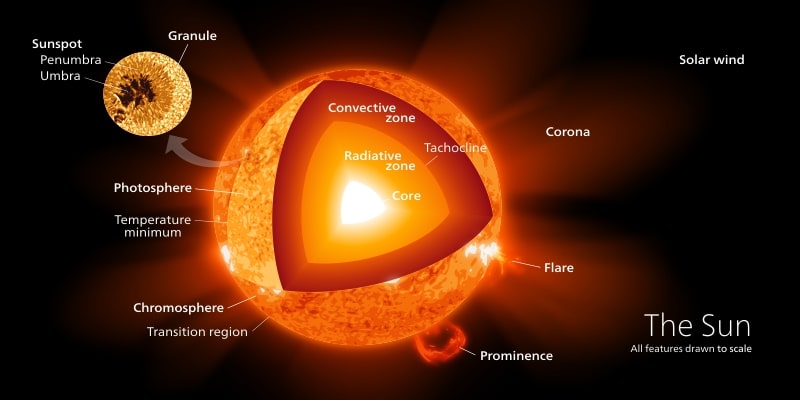
The Sun, our nearest star, has always captivated the curiosity of humans. While the bright photosphere is what we most commonly associate with the Sun’s appearance, astronomers have made significant strides in exploring the layers beneath the photosphere. Understanding these deeper layers is crucial for our comprehension of solar processes and phenomena.
So, how exactly do astronomers explore the layers of the Sun below the photosphere? Let’s dive into the various techniques they employ:
Helioseismology
Helioseismology is the study of the Sun’s internal structure and dynamics using observations of its surface oscillations or “sunquakes.” Similar to how seismologists study earthquakes on Earth, helioseismologists analyze the waves that travel through the Sun to gain insights into its interior.
By observing the changes in the Sun’s surface caused by these internal waves, astronomers can infer information about the density, temperature, and composition of the layers below the photosphere. This technique has provided scientists with valuable data on the Sun’s core, radiative zone, and convective zone.
Solar Spectroscopy
Another powerful tool for exploring the Sun’s interior is solar spectroscopy. Astronomers use spectrographs to study the Sun’s spectrum of light, which reveals an abundance of information about its chemical composition and physical properties.
By analyzing the absorption and emission lines in the Sun’s spectrum, scientists can determine the elements present and their quantities within different layers of the Sun. This technique allows them to investigate the temperature, density, and magnetic fields in the regions beneath the photosphere, including the chromosphere and the transition region.
Solar Magnetic Field Measurements
The Sun’s magnetic field plays a pivotal role in shaping its behavior and driving various solar phenomena. Astronomers have developed sophisticated instruments to measure the Sun’s magnetic field and investigate its structure below the photosphere.
By studying the Sun’s magnetic field lines using methods like magnetographs and polarimeters, astronomers can probe the magnetic fields within the layers beneath the photosphere. These measurements provide insights into how the Sun’s magnetic activity drives solar flares, coronal mass ejections, and other fascinating phenomena.
Solar Space Missions
To get a more detailed understanding of the Sun’s interior, astronomers have developed dedicated space missions to study our star up close. Missions like the Solar and Heliospheric Observatory (SOHO), the Solar Dynamics Observatory (SDO), and the Parker Solar Probe were designed to gather data about the layers beneath the Sun’s photosphere.
These missions employ a range of instruments, including telescopes, spectrometers, and magnetometers, to observe and measure different aspects of the Sun’s layers. The data collected by these missions has greatly improved our knowledge of the Sun’s composition, structure, and dynamics.
Conclusion
Astronomers are able to explore the layers of the Sun below the photosphere using a variety of techniques such as helioseismology, solar spectroscopy, magnetic field measurements, and dedicated solar space missions. By combining data from these approaches, scientists have been able to unravel the mysteries of the Sun’s interior, shedding light on its fundamental processes and contributing to our understanding of stars in general.
See also: How Is the Sunspot Cycle Directly Relevant to Us Here on Earth?